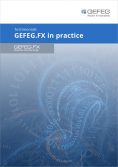Numerous users have documented the use of our products. Benefit from the experience of our customers.
How do others do it?
The GEFEG.Portal supports the implementation and rollout of messages for data interchange, for example bank messages at Austrian credit institutions. With PSA Payment Services Austria GmbH, PSA for short (formerly known as Studiengesellschaft für Zusammenarbeit im Zahlungsverkehr Ges.m.b.H, in short STUZZA) a GEFEG.Portal project was installed in the banking sector.
As of January 1, 2002, Austrian financial institutions abandoned the national format for electronic data exchange previously used in payment transactions in favour of UN/EDIFACT. The aim of the project was to provide the credit institutions in Austria, their customers and the software houses involved in the project with an easily accessible, easy-to-use software solution for testing bank messages as a service in good time before the changeover. The credit institutions were thus almost completely relieved of time-consuming checks of incoming messages during the test phase when converting the traditional data format in payment transactions to the EDIFACT format.
Since July 2001, the XML Checker (formerly STUZZA Checker) has been available for users. The great response and the success of the project was evidenced by the user figures in the core period of the introduction (July 2001 to March 2004): The great response and the success of the project are evidenced by the user figures in the core period of the introduction (July 2001 to March 2004):
Approx. 2,000 users tested around 25,000 transaction files!
With the GEFEG.Portal, PSA offers software support for the introduction of electronic messages
In close cooperation with PSA, the syntactic checks, which are standard during testing, were individually extended and adapted by plausibility checks including meaningful error messages. After specifying which contents should be checked for plausibility, these checks were implemented in the application description of the bank message. The checks were thus optimally tailored to the specific requirements of the Austrian payment transactions. The checks were thus optimally tailored to the specific requirements of the Austrian payment transactions. At the same time, the reference standard was included in the GEFEG.Portal as an HTML project. The errors displayed in the error log could thus be easily traced with the assistance of the documentation and subsequently also corrected.
The financial institutions and their customers benefit from the GEFEG.Portal in several ways
- Setting up the message test with the GEFEG.Portal requires no installation effort.
- Access and availability are guaranteed 24 hours a day.
- The test routine is convenient, easy to understand and can be used without training.
- The built-in checks, such as dependencies, requirements and restrictions, ensure that possible sources of error can be detected and immediately corrected by the data sender himself.
- The error rate in real-time operation is thus drastically reduced and the goal of sending standard-compliant files is achieved faster.
Conclusion
The GEFEG.Portal contributes immensely to saving time and resources when introducing electronic messages to a larger user group!
Test ISO 20022 messages now
Currently, the following ISO 20022 XML messages are available for testing in the XML Checker:
- Lastschrift RB 3.2 (pain.008)
- Lastschrift RB 6.0 (pain.008)
- Überweisung RB 3.2 (pain.001)
- Überweisung RB 6.0 (pain.001)
PSA Payment Services Austria kindly allows us to link and present their XML Checker on the GEFEG web pages.

